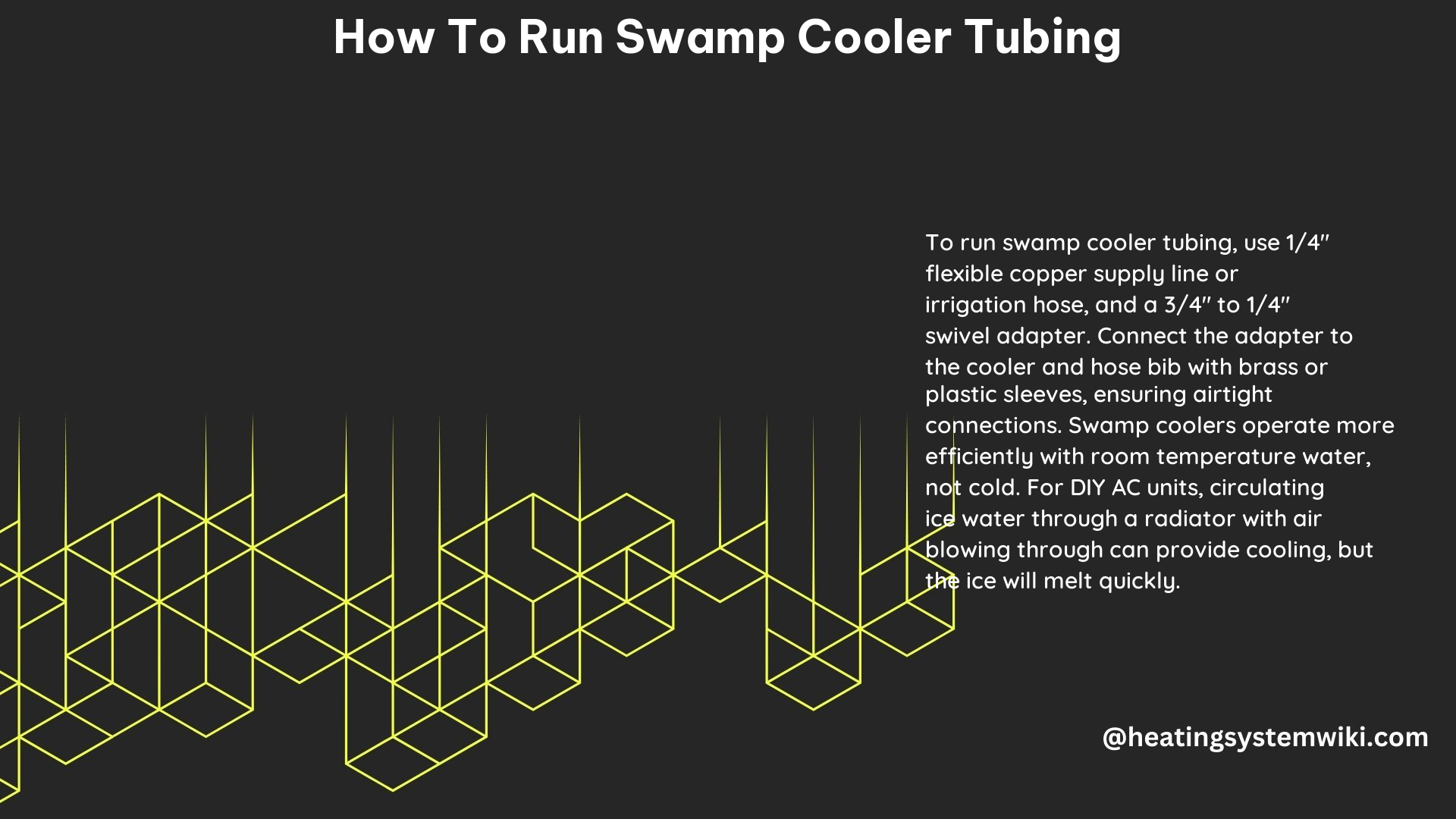Running swamp cooler tubing is a crucial step in maintaining and operating a swamp cooler effectively. Swamp coolers, also known as evaporative coolers, are a popular and energy-efficient alternative to traditional air conditioning systems, especially in dry climates. To ensure your swamp cooler functions optimally, it’s essential to properly connect the water line to the float mechanism. In this comprehensive guide, we’ll delve into the step-by-step process, technical specifications, and DIY approaches to running swamp cooler tubing.
Connecting the Water Line to the Swamp Cooler’s Float
The first step in running swamp cooler tubing is to connect a water line to the swamp cooler’s float. This can be accomplished using soft, flexible copper supply line, a compression ring, and a compression nut. Here’s a detailed breakdown of the process:
-
Slide the Compression Nut onto the Copper Line: Begin by sliding the compression nut onto the copper supply line. This nut will be used to secure the connection later.
-
Slide the Compression Ring onto the Copper Line: Next, slide the compression ring onto the copper line. This ring will create a tight seal between the copper line and the swamp cooler’s float fitting.
-
Connect the Copper Line to the Swamp Cooler’s Float: Carefully insert the copper line into the swamp cooler’s float fitting, ensuring that the compression ring is properly positioned inside the fitting.
-
Tighten the Compression Nut: Finally, use a wrench to tighten the compression nut, securing the connection and preventing any potential leaks.
It’s crucial to use the correct parts and tighten the connections properly to ensure a secure and leak-free installation. Additionally, the water line should be installed at the appropriate height to allow the float to operate efficiently.
Technical Specifications for Running Swamp Cooler Tubing

To ensure a successful and reliable installation, it’s essential to adhere to the following technical specifications for running swamp cooler tubing:
-
Copper Supply Line: Use 1/4 inch soft, flexible copper supply line. This size and material provide the necessary durability and flexibility for the installation.
-
Compression Ring: The compression ring should have an inside diameter of 0.5 inches (12.7 mm) to fit the 1/4 inch copper line.
-
Compression Nut: The compression nut should have an outside diameter of 0.75 inches (19.05 mm) to create a secure connection with the swamp cooler’s float fitting.
-
Tightening Torque: The compression fitting should be tightened to a torque of 15-20 ft-lbs (20.34-27.12 Nm) to ensure a tight and reliable connection.
Following these technical specifications will help you achieve a proper and long-lasting connection between the water line and the swamp cooler’s float.
DIY Approach to Running Swamp Cooler Tubing
For those who prefer a more DIY-friendly approach, you can use alternative materials to run the swamp cooler tubing. One such method involves using quarter-inch plastic sleeves, a three-quarter-inch to quarter-inch swivel adapter, and quarter-inch irrigation hose. Here’s how to proceed:
-
Slide the Brass Nut onto the Plastic Sleeve: Begin by sliding the brass nut onto the plastic sleeve.
-
Insert the Plastic Sleeve into the Swivel Adapter: Next, insert the plastic sleeve into the three-quarter-inch to quarter-inch swivel adapter.
-
Connect the Irrigation Hose to the Swivel Adapter: Finally, connect the quarter-inch irrigation hose to the swivel adapter.
-
Tighten the Connections with Wrenches: Use wrenches to tighten all the connections, ensuring a secure and leak-free installation.
When connecting the water line to a hose bib, it’s essential to ensure that the connection is tight to prevent leaks. Additionally, make sure to turn off the water supply before making the connection.
Conclusion
Running swamp cooler tubing is a crucial step in maintaining and operating a swamp cooler effectively. By following the step-by-step process, adhering to the technical specifications, and exploring DIY alternatives, you can ensure a secure and reliable connection between the water line and the swamp cooler’s float. Remember to use the correct parts, tighten the connections properly, and install the water line at the appropriate height for optimal performance. With this comprehensive guide, you’ll be well-equipped to tackle the task of running swamp cooler tubing with confidence.
